Abdelfattah Kilito in The Baffler:
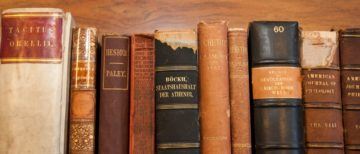 WHAT IS THE POINT of reading the ancients? They are not of our world. They are peacefully asleep and do not want us to wake them. Let the dead bury their dead. We may hesitate a moment in our judgement and suppose that there are, perhaps, benefits and advantages to be gained from their company. Yet we immediately turn our faces away from them, admitting: we ought to read them, but we don’t. The matter remains a mysterious aspiration.
WHAT IS THE POINT of reading the ancients? They are not of our world. They are peacefully asleep and do not want us to wake them. Let the dead bury their dead. We may hesitate a moment in our judgement and suppose that there are, perhaps, benefits and advantages to be gained from their company. Yet we immediately turn our faces away from them, admitting: we ought to read them, but we don’t. The matter remains a mysterious aspiration.
The strange thing is that despite not reading them, we behave as though we have read them and lay claim to the knowledge of their production. Personally, I have not read the Iliad, but I know the gist of it—and by the way, who reads Don Quixote? Most know about it only through the drawings of Gustave Doré or by way of a paragraph in the pages of a school textbook. This applies just as well to the majority of works designated as “classic.” What does this designation mean? Italo Calvino presented fourteen definitions of it, opening with the statement that the classic book is one which the reader says they re-read and never says they are currently reading.
It is commonly understood that every literature has a particular temporal sequence and a unique nomenclature for its stages. As a simple example, the French researcher in the literature of the Middle Ages is designated a “médiéviste.” (Paul Zumthor[1] is among the distinguished researchers in this field). Is it possible to apply this description to a researcher interested in Arabic texts in their particular era, regardless of whether the researcher is Arab or non-Arab? This seems to me quite farfetched, since the term “Middle Ages” does not align with Arab history, nor does it agree with what we know of the development of Arabic literature. Every literature has its own periodization, hierarchy, classic texts, and even classical age. According to the French, as it is known, the classical age par excellence is the seventeenth century.
More here.
 To the untrained eye, Kinetography looks esoteric and occult, but to the few who can read it the complex strips of hieroglyphs allow them to recreate dances much as their original choreographers imagined them. Dance notation was invented in seventeenth-century France to score court dances and classical ballet, but it recorded only formal footsteps and by Laban’s time it was largely forgotten. Laban’s dream was to create a “universally applicable” notation that could capture the frenzy and nuance of modern dance, and he developed a system of 1,421 abstract symbols to record the dancer’s every movement in space, as well as the energy level and timing with which they were made. He hoped that his code would elevate dance to its rightful place in the hierarchy of arts, “alongside literature and music,” and that one day everyone would be able to read it fluently.
To the untrained eye, Kinetography looks esoteric and occult, but to the few who can read it the complex strips of hieroglyphs allow them to recreate dances much as their original choreographers imagined them. Dance notation was invented in seventeenth-century France to score court dances and classical ballet, but it recorded only formal footsteps and by Laban’s time it was largely forgotten. Laban’s dream was to create a “universally applicable” notation that could capture the frenzy and nuance of modern dance, and he developed a system of 1,421 abstract symbols to record the dancer’s every movement in space, as well as the energy level and timing with which they were made. He hoped that his code would elevate dance to its rightful place in the hierarchy of arts, “alongside literature and music,” and that one day everyone would be able to read it fluently.
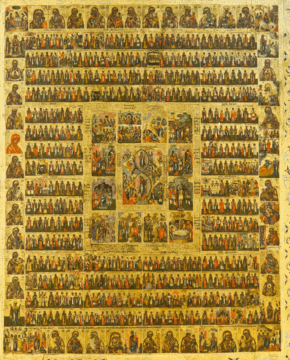 One of the most intriguing moments in Claude Lévi-Strauss’s magisterial
One of the most intriguing moments in Claude Lévi-Strauss’s magisterial  Telling a story seems like the most natural, human thing in the world. We all do it, all the time. And who amongst us doesn’t think we could be a fairly competent novelist, if we just bothered to take the time? But storytelling is a craft like any other, with its own secret techniques and best practices. Charlie Jane Anders is a multiple-award-winning novelist and story writer, but also someone who has thought carefully about all the ingredients of a good story, from plot and conflict to characters and relationships. This will be a useful conversation for anyone who tells stories, reads books, or watches movies. Maybe you’ll be inspired to finally write that novel.
Telling a story seems like the most natural, human thing in the world. We all do it, all the time. And who amongst us doesn’t think we could be a fairly competent novelist, if we just bothered to take the time? But storytelling is a craft like any other, with its own secret techniques and best practices. Charlie Jane Anders is a multiple-award-winning novelist and story writer, but also someone who has thought carefully about all the ingredients of a good story, from plot and conflict to characters and relationships. This will be a useful conversation for anyone who tells stories, reads books, or watches movies. Maybe you’ll be inspired to finally write that novel.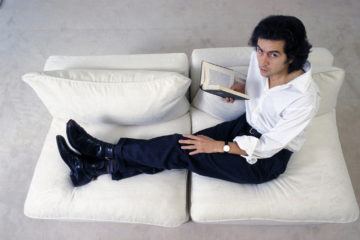
 Efficient folk have come up with a range of productivity techniques. Benjamin Franklin was an early advocate of the modern to-do list. Each morning America’s Founding Father jotted down tasks and asked himself: “What good shall I do this day?” Office grunts take a less virtuous approach to planning. Some practise the Pomodoro technique, a strategy of slicing your day into 25-minute chunks of intense focus with five-minute breaks in between. Many people use a task-management app as a “second brain”, storing their thoughts in the cloud for safekeeping. Productivity tools can also have the opposite effect. You may spend so long managing your time that you never get to the work itself. “Yak shaving” is a term for tasks that lead on to further tasks which distract you from your original goal. If you want to become a time-management master, don’t go anywhere near a yak with a razor.
Efficient folk have come up with a range of productivity techniques. Benjamin Franklin was an early advocate of the modern to-do list. Each morning America’s Founding Father jotted down tasks and asked himself: “What good shall I do this day?” Office grunts take a less virtuous approach to planning. Some practise the Pomodoro technique, a strategy of slicing your day into 25-minute chunks of intense focus with five-minute breaks in between. Many people use a task-management app as a “second brain”, storing their thoughts in the cloud for safekeeping. Productivity tools can also have the opposite effect. You may spend so long managing your time that you never get to the work itself. “Yak shaving” is a term for tasks that lead on to further tasks which distract you from your original goal. If you want to become a time-management master, don’t go anywhere near a yak with a razor. He Jiankui seemed nervous. At the time, he was an obscure researcher working at the Southern University of Science and Technology in Shenzhen, China. But he had been working on a top-secret project for the last two years – and he was about to take to the podium at the International Summit on Human Genome Editing to announce the results. There was a general buzz of excitement in the air. The audience looked on anxiously. People started filming on their phones. Jiankui had made the first genetically modified babies in the history of humankind. After 3.7 billion years of continuous, undisturbed evolution by natural selection, a life form had taken its innate biology into its own hands. The result was twin baby girls who were born with altered copies of a gene known as CCR5, which the scientist hoped would make them immune to HIV.
He Jiankui seemed nervous. At the time, he was an obscure researcher working at the Southern University of Science and Technology in Shenzhen, China. But he had been working on a top-secret project for the last two years – and he was about to take to the podium at the International Summit on Human Genome Editing to announce the results. There was a general buzz of excitement in the air. The audience looked on anxiously. People started filming on their phones. Jiankui had made the first genetically modified babies in the history of humankind. After 3.7 billion years of continuous, undisturbed evolution by natural selection, a life form had taken its innate biology into its own hands. The result was twin baby girls who were born with altered copies of a gene known as CCR5, which the scientist hoped would make them immune to HIV.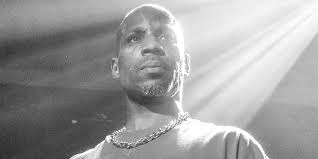 DMX CLOSES OUT HIS SONG
DMX CLOSES OUT HIS SONG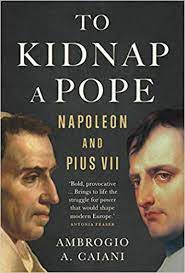 This 5 May will mark the bicentenary of Napoleon’s death on St Helena. The occasion will no doubt be marked, as was the bicentenary of the Battle of Waterloo six years ago, by a flood of new books about the emperor, adding yet more to the estimated 200,000 already written. Given this saturation, one wonders if there is anything left to say. This fascinating book proves that there is. It does so by focusing on a crucial yet neglected aspect of Napoleon’s rule: his bitter, decade-long confrontation with Pope Pius VII. This marked an important step both in the emperor’s decline and fall, and in the evolution of the Catholic Church.
This 5 May will mark the bicentenary of Napoleon’s death on St Helena. The occasion will no doubt be marked, as was the bicentenary of the Battle of Waterloo six years ago, by a flood of new books about the emperor, adding yet more to the estimated 200,000 already written. Given this saturation, one wonders if there is anything left to say. This fascinating book proves that there is. It does so by focusing on a crucial yet neglected aspect of Napoleon’s rule: his bitter, decade-long confrontation with Pope Pius VII. This marked an important step both in the emperor’s decline and fall, and in the evolution of the Catholic Church.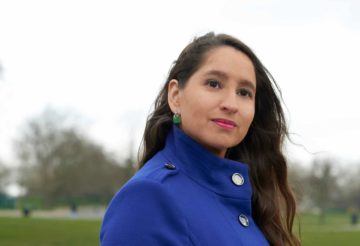 Catherine Menon was born in Perth, Western Australia, where her British mother and Malaysian father met. She lectures in robotics and has a PhD in pure mathematics as well as an MA in creative writing. Fragile Monsters, her first novel, is set in rural Malaysia and unpicks a family’s story from 1920 to the present day. At its centre are Mary, “sharp tongued and ferocious”, and her visiting granddaughter, Durga, who tussle over the demons and dark memories that distort their past and warp the present. Hilary Mantel has described Menon’s writing as “supple, artful, skilful storytelling” and she has won awards for her short stories. She is married to a fellow mathematician and lives in north London.
Catherine Menon was born in Perth, Western Australia, where her British mother and Malaysian father met. She lectures in robotics and has a PhD in pure mathematics as well as an MA in creative writing. Fragile Monsters, her first novel, is set in rural Malaysia and unpicks a family’s story from 1920 to the present day. At its centre are Mary, “sharp tongued and ferocious”, and her visiting granddaughter, Durga, who tussle over the demons and dark memories that distort their past and warp the present. Hilary Mantel has described Menon’s writing as “supple, artful, skilful storytelling” and she has won awards for her short stories. She is married to a fellow mathematician and lives in north London. A massive landslide—the worst in decades—struck Du Fangming’s home in south China’s Hunan province on July 6. “My house collapsed. My goats were swept away by the mud,” he told Chinese media outlets shortly after the catastrophe. Fortunately, though, he was safe—one of 33 villagers who had been evacuated thanks to early warnings enabled by advanced positioning technologies that can provide more accurate readings than ever before.
A massive landslide—the worst in decades—struck Du Fangming’s home in south China’s Hunan province on July 6. “My house collapsed. My goats were swept away by the mud,” he told Chinese media outlets shortly after the catastrophe. Fortunately, though, he was safe—one of 33 villagers who had been evacuated thanks to early warnings enabled by advanced positioning technologies that can provide more accurate readings than ever before.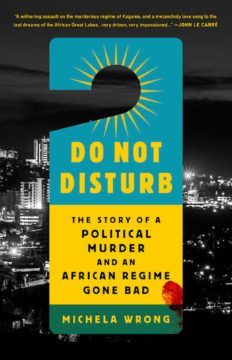 In the view of most historians, the original sin of Rwanda came from the colonial policy of making artificial ethnic distinctions through a caste-like system. Belgian administrators deemed those who were taller and herded cattle, the Tutsis, to be smarter than the Hutu, who were generally shorter and raised crops. So one group got all the privileges of helping the Belgians extract coffee and animal hides and were treated as sub-royals, while their countrymen were deemed slow and stupid. The story was fixed; the Goods and Bads had been preselected, and the inevitable resentments would explode in the 1994 genocide.
In the view of most historians, the original sin of Rwanda came from the colonial policy of making artificial ethnic distinctions through a caste-like system. Belgian administrators deemed those who were taller and herded cattle, the Tutsis, to be smarter than the Hutu, who were generally shorter and raised crops. So one group got all the privileges of helping the Belgians extract coffee and animal hides and were treated as sub-royals, while their countrymen were deemed slow and stupid. The story was fixed; the Goods and Bads had been preselected, and the inevitable resentments would explode in the 1994 genocide. WHAT IS THE POINT
WHAT IS THE POINT